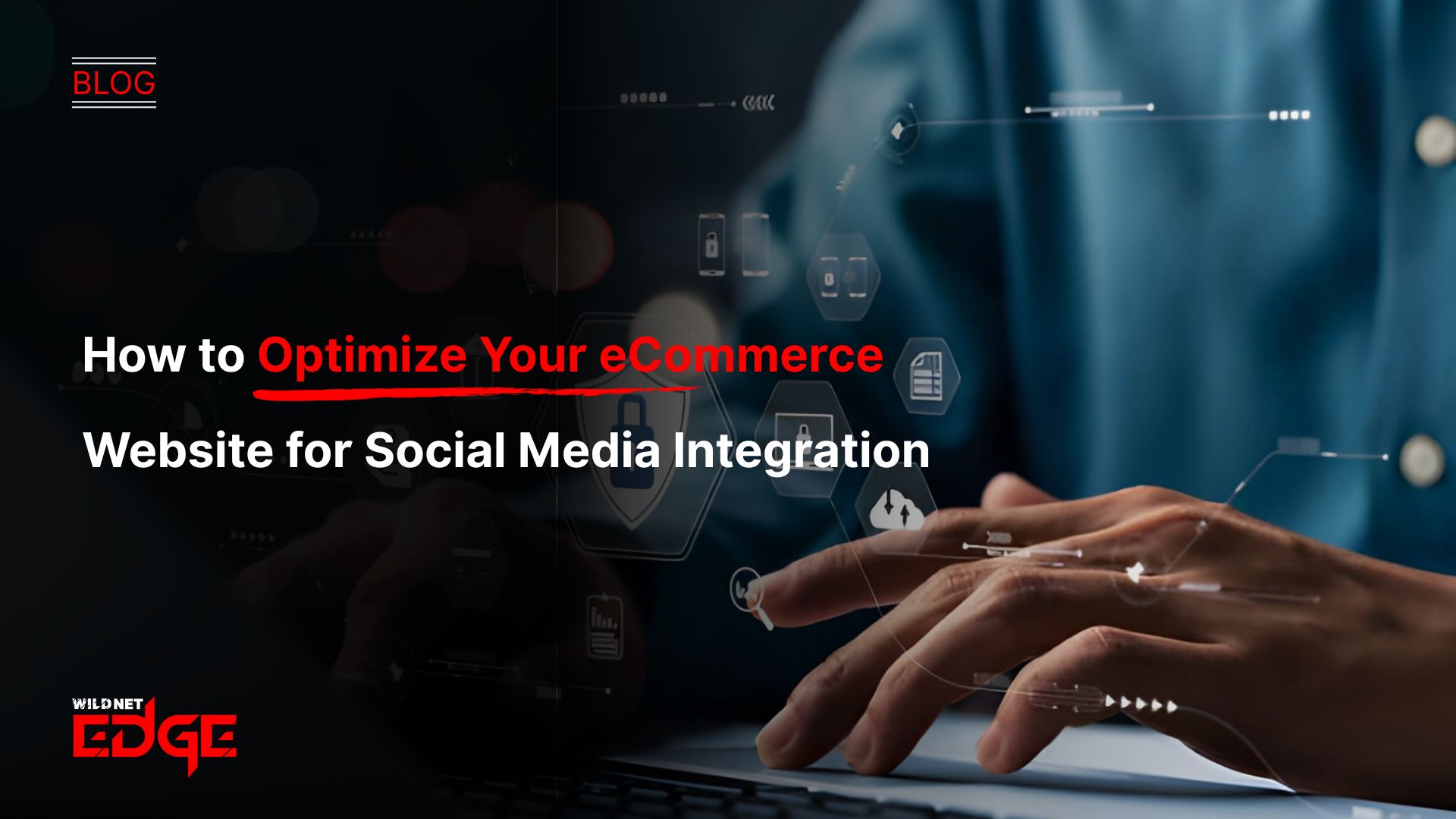TL;DR
This article explores the critical need for ecommerce social media integration. It explains how connecting an online store with social platforms moves beyond simple marketing. The blog details key strategies, including implementing social login for frictionless checkout, using shoppable post integrations (a core part of social commerce), and leveraging user-generated content for social proof. It emphasizes that a deep integration strategy is essential for modern eCommerce marketing, driving qualified traffic, increasing conversion rates, and building a stronger brand community.
In 2025, your eCommerce store and your social media channels can’t afford to be separate worlds anymore. Your customers live, scroll, and shop on platforms like Instagram, TikTok, and Facebook, and they expect your brand to meet them there.
That’s where eCommerce social media integration comes in. It’s not just about dropping a link in your bio; it’s about creating a seamless connection between your online store and your social channels, turning likes into clicks, and clicks into conversions.
This blog explains what social media integration really means, why it matters, and how you can use it to create a unified, high-converting customer experience.
What is eCommerce Social Media Integration?
Let’s clear up a common misconception: eCommerce social media integration is not just adding social icons to your footer. It’s a deep, technical, and strategic alignment between your eCommerce platform and your social media channels.
This includes a range of functionalities:
- Social Login: Allowing users to sign up or log in to your store using their Facebook or Google accounts.
- Social Share Buttons: Making it effortless for customers to share products they love with their networks.
- Live Shopping Feeds: Embedding your Instagram or TikTok feeds directly onto your website.
- Shoppable Posts: Integrating your product catalog directly with social platforms so users can buy from a post.
The core goal of this integration is to reduce friction and create a single, unified brand experience, whether the customer is on your site or their favorite app.
The Core Business Benefits of Deep Integration
Investing in a robust ecommerce integration strategy is not just a trend; it’s a high-ROI business decision.
1. Streamlined Customer Experience with Social Login
We’ve all been there: you find something you want to buy, but the checkout process asks for endless details. Friction like that kills conversions.
Social login simplifies it all. With one click, users can register or check out using an existing account. It’s one of the easiest eCommerce social media integration wins, improving account creation rates and reducing cart abandonment instantly.
2. Enhanced Social Proof and Brand Trust
Modern shoppers, especially Gen Z, trust user-generated content (UGC) far more than they trust polished brand advertisements. A key strategy for this is to pull in this social proof. You provide authentic, real-world validation that builds trust and encourages purchasing by embedding a live feed of your Instagram mentions or a gallery of customer photos (using a specific hashtag) directly onto your product pages.
3. Increased Traffic and New Discovery Channels
Integrating your product catalog with platforms like Instagram Shopping or Pinterest Product Pins turns your social profiles into powerful discovery engines. This is the first step toward social commerce. When users see your product in their feed, they can tap to see the price and click again to land directly on the product page, ready to buy. This seamless funnel directly drives highly qualified, high-intent traffic to your store, making it a critical eCommerce marketing tactic.
This level of deep platform integration often requires a professional Ecommerce Development Company to ensure your product data (SKUs, inventory, pricing) is synced correctly and in real-time.
4. Unified Customer Conversations
eCommerce integration allows you to unify your customer service. Integrating your social media direct messages and comments into your central customer support desk (like Salesforce or Zendesk) allows your team to manage all customer interactions from one place. This ensures faster response times and a more consistent service experience, whether a customer complains on Twitter or via email.
Key Strategies for eCommerce Social Media Integration
Here are the most effective ways to connect your store and social channels.
1. Implement Social Login at Key Touchpoints
Add social login to your sign-up, checkout, and wishlist pages. The fewer forms users have to fill out, the more likely they are to complete their purchases.
2. Make Sharing Effortless
Add social share buttons to product and “Thank You” pages. Shoppers love showing off their finds; make it easy for them to spread the word.
3. Embrace Shoppable Posts and Feeds
Use shoppable posts and feeds to connect your product catalog with Facebook Shops, Instagram Shopping, and Pinterest. Let customers buy without ever leaving their favorite apps.
4. Leverage User-Generated Content (UGC) on Your Site
Use a tool (like Yotpo, Pixlee) to find and curate photos your customers have posted of your products. Display these authentic images in a gallery on your product pages. This builds community and provides powerful social proof that static, professional photos cannot.
The Next Frontier: The Rise of Social Commerce
Social commerce is the evolution of this integration. It’s the practice of selling products directly within the social media platform itself, without ever forcing the user to leave the app.
Platforms like Instagram and TikTok are aggressively building out full, native checkout experiences. This is the future of eCommerce marketing. For your business, this means the backend ecommerce social media integration becomes even more critical. Your inventory, order management, and customer data must be perfectly synced between your central eCommerce platform and these new social storefronts to prevent overselling and to maintain a single view of your customer.
Our Integration Services in Action: Case Studies
Case Study 1: The Fashion Retailer
- The Challenge: A fast-fashion brand had a massive Instagram following but was struggling to convert those followers into paying customers. The “link in bio” was a significant point of friction.
- Our Solution: We implemented a full ecommerce social media integration strategy. We integrated their product catalog with Instagram Shopping, allowing them to tag products in all their posts and Stories. We also embedded a live, shoppable Instagram feed on their homepage.
- The Result: Referral traffic from Instagram to product pages increased by over 300%. The conversion rate for this traffic was 2.5x higher than any other channel, as users arrived with high purchase intent.
Case Study 2: The B2B Software Company
- The Challenge: A B2B SaaS company had a complex, multi-step registration process for their free trial, leading to a high drop-off rate.
- Our Solution: We implemented a “Sign up with Google” and “Sign up with LinkedIn” option. This single ecommerce social media integration (B2B-focused) reduced the sign-up process to two clicks.
- The Result: Their free trial sign-up conversion rate increased by 40%. The simplified process removed the initial barrier to entry, significantly boosting their lead-generation funnel.
Our Technology Stack for eCommerce Integration
We leverage modern tools to connect your platforms seamlessly.
- eCommerce Platforms: Shopify, BigCommerce, Magento, WooCommerce, Custom Builds
- Social Platform APIs: Facebook/Instagram Graph API, Pinterest API, TikTok for Business API
- Integration Platforms (iPaaS): Zapier, MuleSoft, Workato, Custom APIs
- UGC & Reviews: Yotpo, Bazaarvoice, Pixlee
- Social Login: OAuth 2.0 integration with Google, Facebook, Apple
Conclusion
An ecommerce social media integration is no longer optional. It is a core requirement for a modern, customer-centric business. The success of your eCommerce marketing and social commerce strategies depends entirely on this technical foundation. By building a seamless bridge between your store and the platforms where your customers spend their time, you reduce friction, build trust, and create a powerful engine for growth.
Ready to build an integrated eCommerce experience that drives real revenue? At Wildnet Edge, our AI-first approach ensures we build intelligent, Custom Software Solutions. We create robust integrations that connect your platforms and provide the data needed for smarter, more effective marketing.
FAQs
The biggest mistake is thinking it’s just about posting links. A true ecommerce social media integration is technical. It involves API connections, product catalog synchronization, and data sharing. Simply posting your website URL on Instagram is not a strategy; it’s a missed opportunity.
It directly reduces checkout friction. It eliminates the need for a new customer to manually type their name, email, and a new password, a process where many users abandon their cart. A single click to “Continue with Google” is faster and easier, leading to higher conversion rates.
An embedded feed is a widget on your website that displays your Instagram posts. A shoppable post is a feature on the social media platform (like Instagram) that allows you to tag your products, showing a price and a direct link to your store.
Security is crucial. When implementing social login, you must use standard, secure protocols like OAuth 2.0. This ensures that you never actually see or store the user’s social media password. You are simply given a secure token by Google or Facebook that confirms the user’s identity.
Yes. AI is the key to managing it at scale. An AI Automation Agency can help you build AI-powered chatbots that function as AI Application Assistant tools within your Facebook or Instagram DMs, answering product questions and guiding users to a purchase 24/7.
The future is a complete “in-app” experience. Customers will discover, browse, “try on” (with AR), and purchase a product without ever leaving the social media app. This makes a real-time, two-way integration with your store’s inventory and order management system absolutely essential.
The first step is to analyze your customer journey and identify the most significant points of friction. Where are you losing customers between your social media and your store? Is it at the link? At sign-up? At checkout? Start by fixing the most enormous, leakiest hole in your funnel.

Nitin Agarwal is a veteran in custom software development. He is fascinated by how software can turn ideas into real-world solutions. With extensive experience designing scalable and efficient systems, he focuses on creating software that delivers tangible results. Nitin enjoys exploring emerging technologies, taking on challenging projects, and mentoring teams to bring ideas to life. He believes that good software is not just about code; it’s about understanding problems and creating value for users. For him, great software combines thoughtful design, clever engineering, and a clear understanding of the problems it’s meant to solve.
 sales@wildnetedge.com
sales@wildnetedge.com +1 (212) 901 8616
+1 (212) 901 8616 +1 (437) 225-7733
+1 (437) 225-7733































